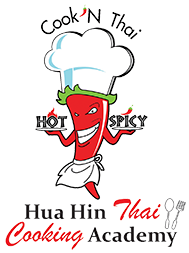
The tale of 2 red curry pastes
Red Curry Paste: how well do you really know your red curry paste?
The name “Red Curry Paste” has actually been put, by different food suppliers, on two very different pastes, Basic Red Curry Paste (prig gang kua) and Red Curry Paste (prig gang ped). Basic Red Curry Paste is made of dried chili peppers, salt, galangal, lemongrass, kaffir lime zest, garlic,cilantro roots, shallots and shrimp paste while Red Curry Paste, takes the Basic Red Curry Paste and adds toasted peppercorns, cumin andcoriander.
How are the pastes used?
The Basic Red Curry Paste is used in making Basic Red Curries or Gang Kua. Gang kua is a type of curry that often has added grilled fish or dried shrimp. Gang kua can be sweet and sour from sweet ingredients like sugar and pineapple and sour ingredients like kaffir lime juice and tamarind. The Basic Red Curry paste can be used in a wide variety of dishes like panang, haw mok and tod mun (fish patties) as well.
Red Curry Paste is specifically for making red curry dishes, like chicken curry.
How do the two pastes taste different?
Curries made with Basic red curries taste clean and simple while curries made with Red Curry Paste taste spicy, with aroma of pepper, cumin and coriander, deep and complex.
What am I getting when I buy “Red Curry Paste” from the store?
Unfortunately, you must closely read the label for the ingredients and the Thai name. Most brands indiscriminately market both curry pastes as “Red Curry Paste”. Look for the toasted seeds (or not if you want the Basic).
Why is this so confusing?
In Thailand, as more people work in offices and fewer cook, let alone make their own curry paste, many people’s connection to the details of the food they love has atrophied. Now, if you ask an average Thai, they often don’t know the nuances of the different ingredients in their pastes.
Outside of Thailand, we used to be happy to get any curry paste from a store. Now though, as the exported food market has grown and more people outside of Thailand are interested in deeply understanding and successfully cooking real Thai food, suppliers need to improve their packaging and labeling. While I recently found a brand that correctly labeled their red curry pastes and offered both pastes, most still do not.
What if I can’t find the correct curry paste?
Aside from making your own curry paste, if you can get the Basic Curry Paste, you can add the toasted seeds when necessary. However if you need Basic Red Curry Paste and can only get Red Curry Paste, go ahead and use the Red Curry Paste but keep checking the store, as the suppliers are likely to eventually supply both types.

